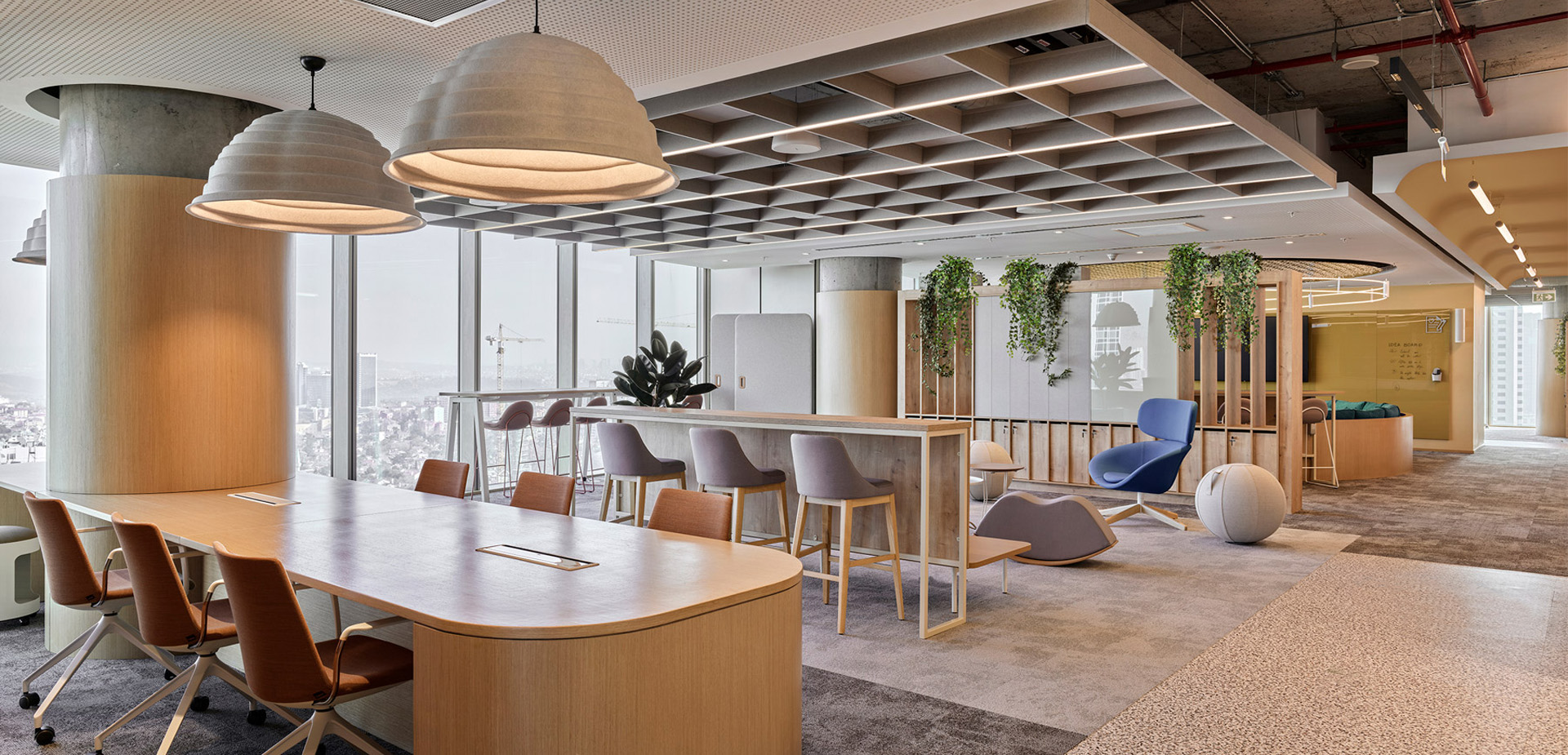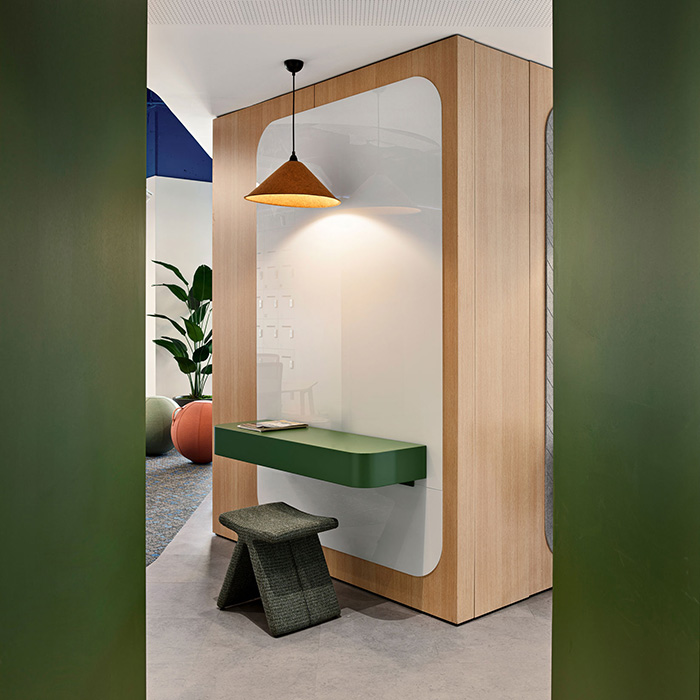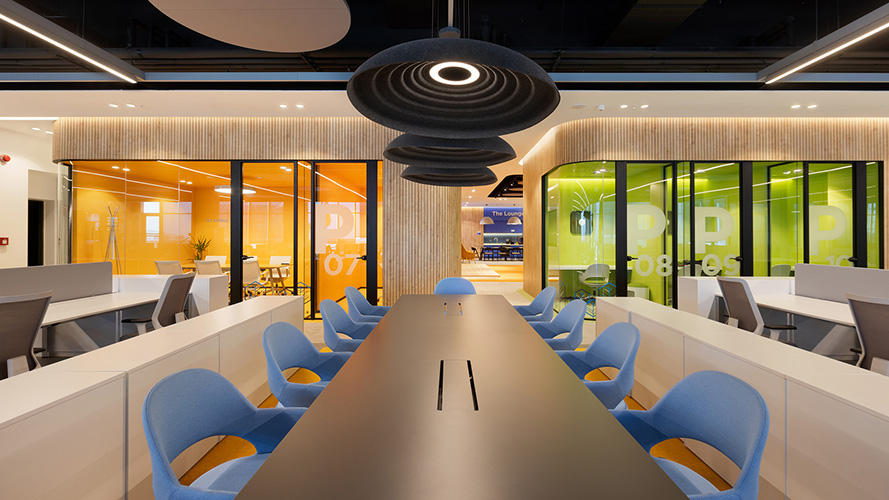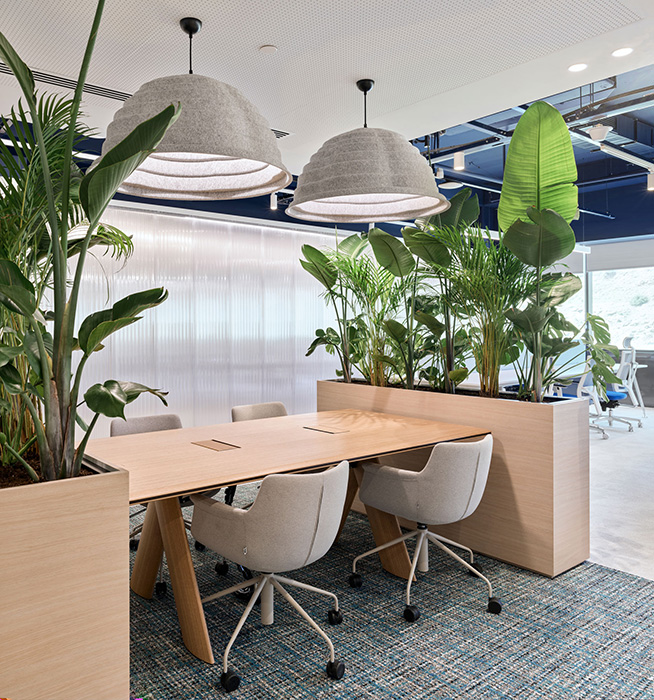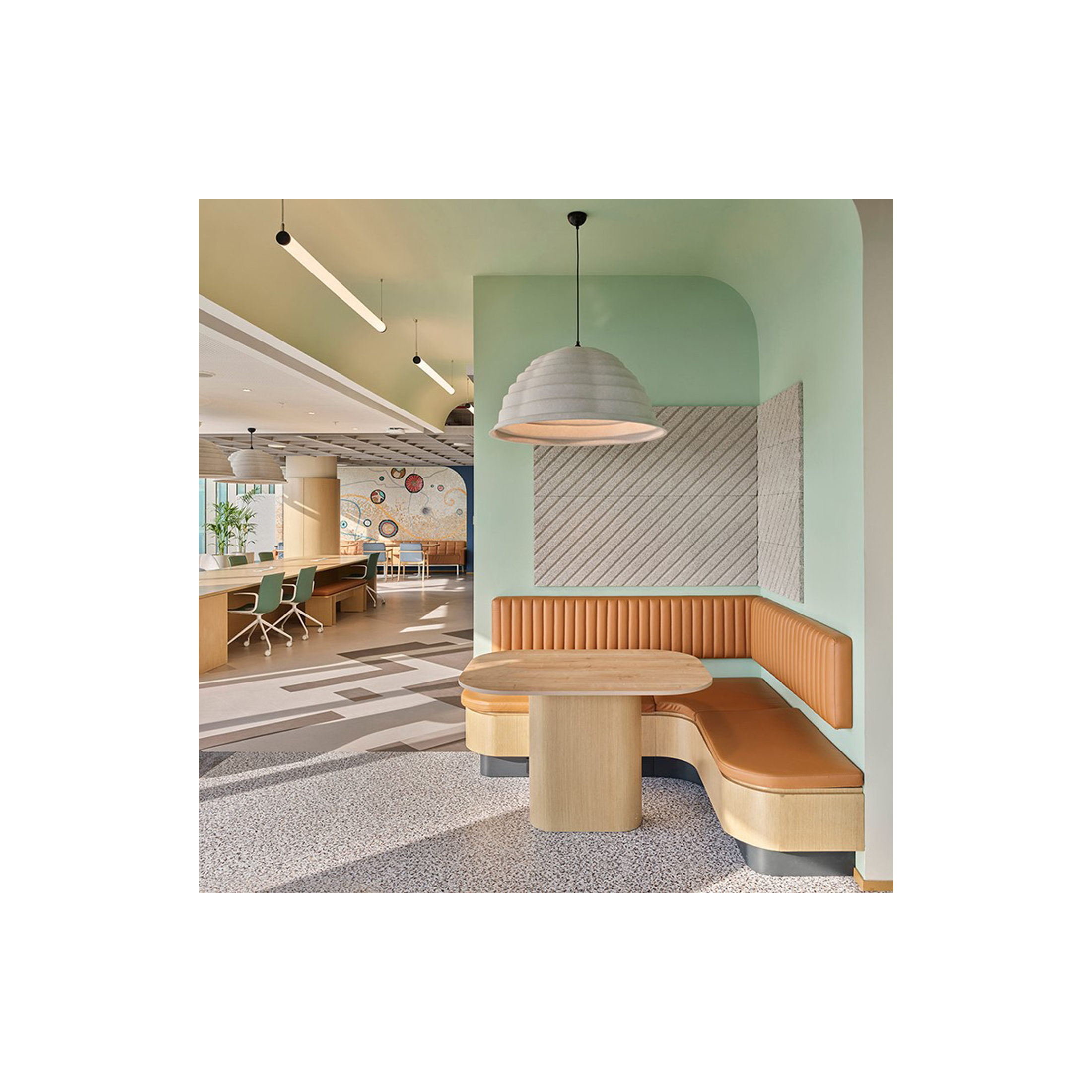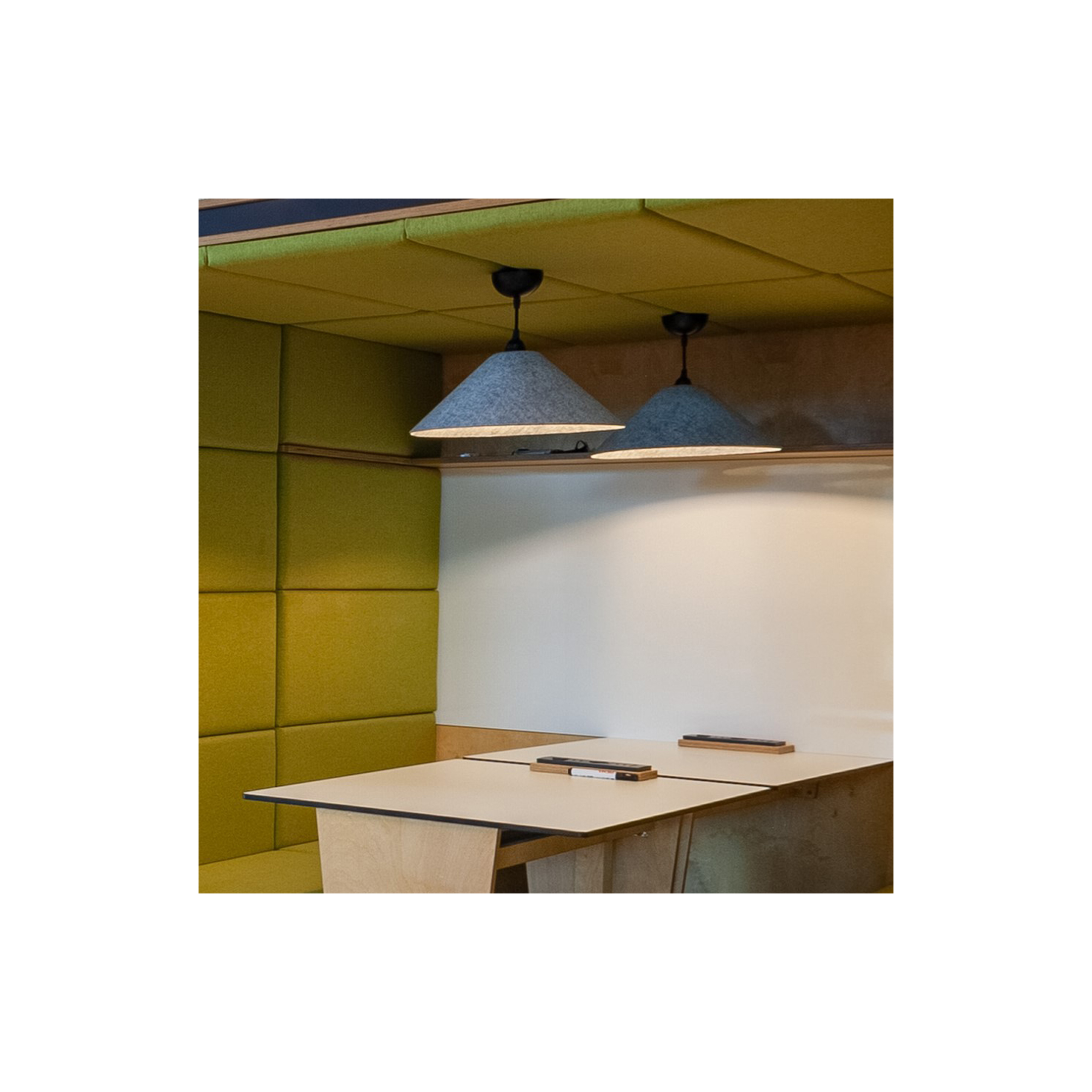-
In today’s recent innovations, the aspiration for enhanced acoustic environments has given rise to an innovative solution: acoustic lighting. This advanced technology harmoniously integrates the essential functions of lighting with the effective properties of sound absorption, thereby transforming our interaction with and understanding of our environments.
-
-
-
-
How acoustic lighting works
Acoustic lighting requires a carefully refined combination of materials and engineering principles, skillfully integrating specialized sound-absorbing materials into their design. The key components of acoustic lighting include:
Sound-Absorbing Materials:
Porous materials like melamine foam or fiberglass
Perforated panels or diffusers
Micro-perforated wood or metal surfacesAcoustic Cavities:
Strategically placed air gaps or cavities within the fixture
Designed to trap and dissipate sound wavesReflective Surfaces:
Carefully angled and positioned reflective surfaces
Redirect and scatter sound waves for optimal absorption -
-
-
Topolight
-
Acoustic lighting fixtures effectively capture and dissipate sound waves, reducing reverberation and echoes within a space. This results in a harmonious auditory environment where sound clarity and intelligibility are significantly enhanced.
-
Conic
-
Topolight
-
Benefits of acoustic lighting in improving sound quality
Integrating acoustic lighting into modern spaces offers numerous benefits, elevating the overall auditory experience and creating an environment conducive to productivity, relaxation, and enjoyment.
Enhanced Speech Intelligibility:
Reduces excessive reverberation and echo and improves clarity and comprehension in conference rooms, classrooms, and public spaces
Optimized Sound Quality:
Absorbs unwanted frequencies and reflections and delivers a more balanced and natural sound reproduction
Noise Reduction:
Mitigates ambient noise from external sources and creates a quieter and more peaceful environment
Improved Acoustics for Music and Audio:
Eliminates unwanted resonances and standing waves and ensures accurate sound reproduction in recording studios and home theaters
Energy Efficiency:
Combines lighting and acoustic solutions into a single fixture and reduces the need for additional sound-absorbing materials
-
-
-
The future of acoustic lighting and emerging trends
As the demand for innovative acoustic solutions continues to grow, the future of acoustic lighting promises exciting developments and emerging trends. Researchers, designers, and manufacturers continuously push the boundaries of what is possible, exploring new materials, technologies, and applications. The future of acoustic lighting includes:
Sustainable Materials: Focus on recycled and biodegradable options.
Intelligent Systems: Integration with smart home tech for automated adjustments.
Multifunctionality: Combining acoustic features with air purification and sensing.
Customization: 3D printing for personalized designs.
AR/VR: Enhancing design through acoustic simulations.
-
Pumpkin
-
Acoustic lighting is a groundbreaking solution that blends illumination with advanced sound absorption, transforming our experience of sound in built environments. This technology addresses acoustic challenges by enhancing speech intelligibility, optimizing sound quality, and reducing noise, making it valuable for residential, commercial, entertainment, and recording spaces. Acoustic lighting embraces modern innovation and demonstrates the power of collaboration. It allows architects and designers to create spaces that engage the eye and the ear.
